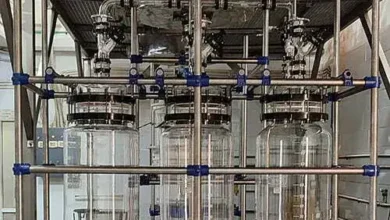Innovative Glass Wall and Sliding Door Solutions for Modern Workspaces

Productivity in the information age is measured best by innovative design that should inspire collaboration, increase productivity, and enable freedom and openness. Therefore, one clever technique to pursue this goal is adaptive glass wall and sliding door solutions.
Apart from their flexibility in providing more space, they give an on-trend design and make your space brighter for sunlight. This could be your sliding glass doors, PC350 door solutions, or other commercial office door solutions. It all depends on what a business should consider upgrading its office spaces to.
What are Sliding Glass Doors?
Sliding glass doors are crafted mostly out of panes of glass that slide through in a horizontal fashion. Through facilitating the movement of spaces, these doors create an open and spacious effect. While frequently used in houses, they have become famous among business edifice settings, having huge numbers of benefits.
- One of the biggest advantages of sliding glass doors for a working space lies in their ability to section different areas without creating the impression of segregation.
- In comparison with most traditional swing doors, which waste floor space and impede the flow, the sliding glass doors move open to enjoy a maximal floor surface. They allow very smooth transitioning among the rooms, conference sections, lounges, and even break rooms.
- Meanwhile, sliding glass doors in particular may be ordered soundproofed and filled with energy-efficient glass. They create a comfortable and private working environment.
- The material transparency allows natural sunlight to flood the area. This also helps increase overall mood and energy levels in the office. It has a big impact on productivity and well-being for employees.
PC350 Door Solutions: A Modern Choice for Workspaces
PC350 commercial office door solutions are fast gaining popularity. They deliver premium quality and high durability while being stylish and easy-on-the-eye doors. Known for its flawless performance, excellent design, and the fact that it can be used in various areas, therefore making it worthy of everyone who would like modern commercial environments as their choice.
- Compared to the first traditional and old designs of office doors, they used to be large and heavy or not, but traditionally heavy to maintain.
- The installation of this solution was done in such an appropriate way that the generated potential energy by closing the doors is evaluated and utilized, rather than being thrown away. The high traffic in a certain area demands less usage that can withhold more constant use without losing the effectiveness of the material.
- Their standout feature is the flexibility of design, attributed to their module. Businesses are allowed to get through it in various styles, including clear glass, frosted, or perhaps even tinted.
- It is adaptable and flexible to cope with the open plan and segregated environment of offices and conference rooms. Making an open, collaborative space or a more closed, focused area will be easy with the help of PC350 door solutions.
Additionally, PC350 door solutions provide impressive sound insulation. They help maintain confidentiality and prevent distractions from meetings and discussions. This is very important when highly confidential meetings and work require the utmost concentration.
Benefits of Glass Walls and Sliding Doors in the Workplace
- Maximizing Natural Light:
One of the biggest advantages of using sliding glass doors and glass partitions in office design is their ability to allow natural light to flood the space. Natural light enhances mood, increases productivity, and improves overall employee satisfaction. By incorporating sliding glass doors or glass walls into the design, businesses can create a brighter, more inviting work environment. - Flexible Layouts:
Modern workspaces are increasingly adopting flexible layouts that can be easily adapted to different needs. Sliding glass doors and PC350 door solutions provide the flexibility to transform spaces quickly. Whether you need to create a private meeting room, a collaborative area, or a space for relaxation, these doors offer the versatility required for dynamic office environments. - Space Efficiency:
Sliding glass doors are perfect for offices where space is at a premium. Because they slide open, they do not take up any additional space when in use, unlike traditional swinging doors. This makes them an ideal choice for smaller offices or areas where maximizing every inch of available space is a priority.
Conclusion
Modern workspaces are evolving, and the demand for innovative office designs is at an all-time high. By choosing sliding glass doors, PC350 door solutions, and other commercial office door solutions, you can create a functional and aesthetically pleasing environment that aligns with your business goals. Whether you’re looking for flexible spaces, enhanced privacy, or improved natural light, these door solutions offer all of that and more.
Investing in glass walls and sliding doors is a smart choice for any modern office. They foster a productive, collaborative, and inspiring workspace.
For more articles like this, visit newstric.com.




